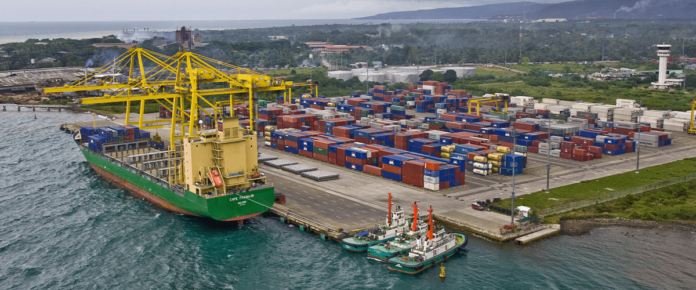-
The Bureau of Customs (BOC) conducted a time release study at five key ports last year to determine bottlenecks in cargo clearance and release time
-
The study found that processing by the BOC improved after the agency operationalized new measures such as computerization and enhanced risk management systems
-
The agency claimed any operational delays that occurred happened outside customs jurisdiction
Processing at the Bureau of Customs (BOC) improved with the introduction of computerization and online systems and enhancement of risk management, according to a 2020 time release study (TRS) conducted by the agency.
The TRS was conducted at five ports—Cagayan de Oro, Davao, Manila International Container Port (MICP), Mindanao Container Terminal or MCT (a subport of Cagayan de Oro), Port of Manila (POM), and Zamboanga—to determine bottlenecks in cargo clearance and release time.
According to the TRS, average processing time for imported containerized cargo at the five ports is now as follows:
- MICP: 1 day, 22 hours and 9 minutes
- POM: 2 days, nine hours and 44 minutes
- Davao port: 2 days, 15 hours and 37 minutes
- MCT: 1 day, 12 hours, and 5 minutes
- Zamboanga: No containerized cargo arrived at this port during the TRS period
For processing of exports at the Manila ports, average time, which covered the processing of export declaration from submission at the Customer Care Portal System (CCPS), was as follows:
- MICP: 4 hours, 38 minutes and 3 seconds
- POM: 1 day, 13 minutes and 30 seconds
For exports at the Mindanao ports, processing of which cover the submission of export declaration to issuance of Authority to Load, the average processing time was the following:
- Zamboanga port: 3 days, 15 hours, 28 minutes and 21 seconds
- Davao port: 21 hours, 21 minutes and 9 seconds
- MCT: 19 hours, 6 minutes, 13 seconds
BOC in a statement said the study showed that the improvement in processing came after several factors or new measures were operationalized, such as the CCPS, Goods Declaration and Verification System (GDVS), and Document Tracking System (DTS).
Introduced in June 2019, the CCPS is a web-based application that allows stakeholders to electronically submit their concerns, complaints, feedback, or suggestions as well as upload documents using the portal. Issues, concerns and requests are assigned a unique ticket number that clients can use to track progress and responses online.
GDVS is a web-based queue management system that allows stakeholders to get real-time updates on the status of their goods declaration, while DTS enables the online monitoring and tracking of all documents received and generated by BOC offices.
BOC said another helpful measure was allowing the tentative release of shipments last year through Customs Memorandum Order No. 07-2020, which enables processing of provisional goods declaration under the formal entry system.
“Likewise, the computerization and improved risk management system at the Bureau also contributed to the fast processing of shipments,” BOC said.
“Further, the TRS also showed that the delay, if any, in the release of shipment was not within the customs jurisdiction but actually occurs before the formal lodgment of the declarations, which is considered as pre-customs, as well as after the BOC’s on-line release to the arrastre, which is considered as post customs,” the bureau added.
BOC said the final copy of the TRS providing more details on the results is still being “worked on and will be published in the Customs website.”
Customs Commissioner Rey Leonardo Guerrero has recognized the TRS as a valuable tool in enhancing trade facilitation and determining the various factors affecting operations.
“By identifying the problems and so-called bottlenecks in customs processes and procedures, appropriate solutions or policies can be put in place and we can accomplish our goal of being world-class at the soonest possible time,” Guerrero said.
The conduct of the TRS was spearheaded by BOC Planning and Policy Research Division acting chief Atty. Noemi Alcala-Garcia, who heads the TRS Technical Working Group.
Aside from the 2020 TRS, BOC in 2019 also conducted a TRS at MICP—its biggest collection district—and released results last year.
READ: Study highlights need for paperless customs environment, aggressive adoption of AEO
The 2019 MICP TRS highlighted the need for a paperless customs environment and showed that full computerization and automation will avoid the need to manually transfer or bring import documents from one office to another, and will address delays in the processing and release of shipments at ports. – Roumina Pablo





